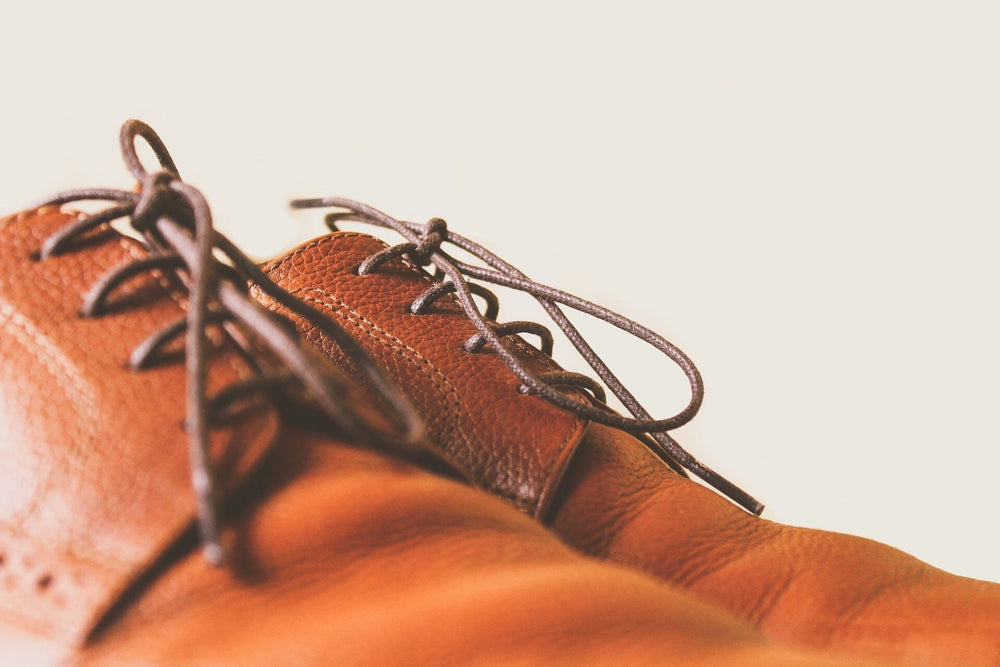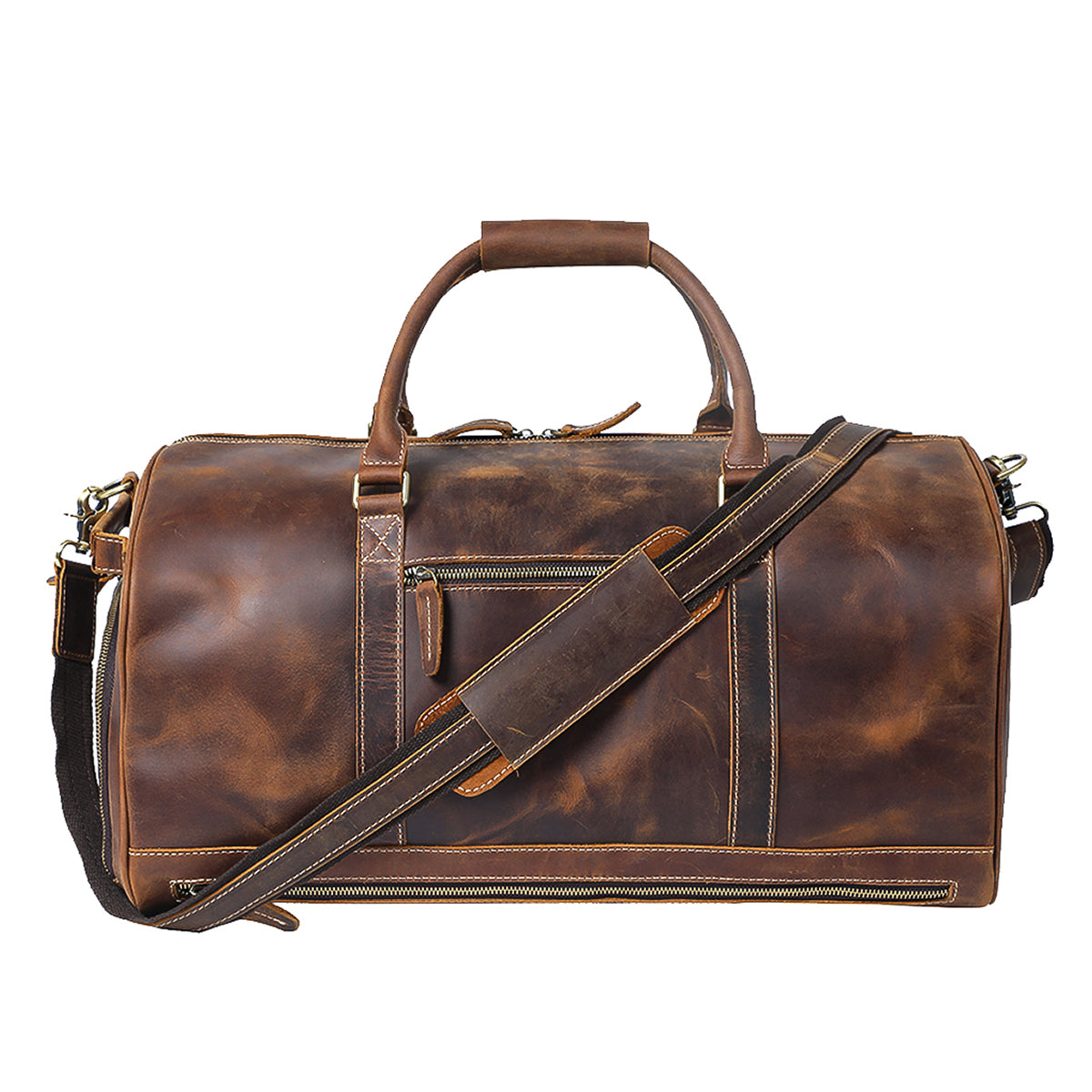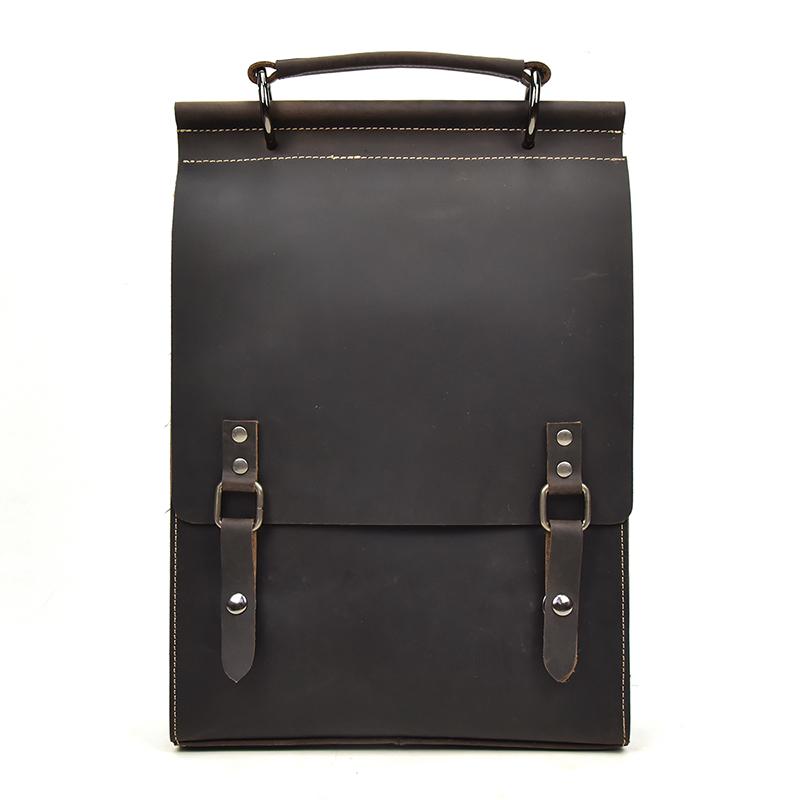
How to Soften Leather? Breathe New Life Into Your Favorite Leather Items
Reading Time: about
Leather is a popular material used for making clothing, shoes, bags, furniture, and many other items.
While it is known for its durability and strength, leather can sometimes be stiff and uncomfortable, especially when it is new.
Fortunately, there are several ways to soften leather and make it more pliable.
In this article, we will discuss the different methods and offer tips and tricks for achieving the desired results.
Why Soften Leather? 🤔
When you first purchase a leather item, it might feel stiff or tight, which can be uncomfortable and limit its functionality. Softening leather not only enhances its comfort but also improves its overall performance. Here are some key reasons why softening leather is essential:
-
Comfort: Softening leather ensures a more comfortable feel, making it ideal for items like shoes, jackets, and bags. When the material is pliable, it easily conforms to the shape of your body, reducing discomfort and allowing for ease of movement.
-
Durability: Softening leather helps reduce the chances of cracks and creases, prolonging the life of your leather items. When leather is supple and flexible, it can better withstand daily wear and tear, maintaining its integrity and appearance.
-
Aesthetics: A softer leather item looks and feels more luxurious, as it showcases the natural grain and texture of the material. As leather softens over time, it develops a unique patina, adding character and depth to its appearance.
The Benefits of Softened Leather
Softened leather offers numerous advantages that make it worth the effort. Here are a few key benefits:
-
Easier to work with: Softened leather is more manageable, which is especially important for craftsmen or DIY enthusiasts. It makes cutting, sewing, and shaping leather much simpler and more efficient.
-
Improved breathability: When leather is softened, its porous structure allows for better air circulation. This ensures that items like shoes and jackets are more breathable, providing a comfortable experience even in warmer weather.
-
Versatility: Softened leather is adaptable, making it suitable for various applications, from clothing to accessories and upholstery. Its pliability allows designers to create unique and innovative products that cater to different tastes and preferences.
Softening leather is a vital step in ensuring your leather items are comfortable, durable, and aesthetically pleasing. By taking the time to soften your leather, you'll enhance its usability and longevity, making it a worthwhile investment.
📷 Credit: Lisa Goodwin ~ True Whimsy's Youtube Channel
Why Does Leather Get Stiff? 😤
As someone who has owned a few leather items over the years, I've noticed that leather can become stiff and less supple for various reasons. In this section, we'll dive into the most common factors that contribute to leather stiffness and explore how you can prevent or reverse it.
The Sneaky Culprit: Moisture
I remember the first time I accidentally left my leather jacket out in the rain. When I retrieved it, I noticed that it had become much stiffer than before. It turns out that exposure to moisture or water can cause leather to shrink and harden as it dries.
This happens because water breaks down the leather's natural oils and fibers, leaving them less flexible. To avoid this, make sure to keep your leather items away from moisture and properly dry them if they do get wet.
Sunlight and Lack of Use: A Double Whammy
It may seem surprising, but even leaving your leather items untouched can lead to stiffness. Leather that is not used or exposed to sunlight can dry out and become stiff over time. The natural oils in leather can evaporate, causing the fibers to lose their elasticity.
To keep your leather items in tip-top shape, regularly use and condition them to maintain their suppleness. And don't forget to store them away from direct sunlight to prevent drying out.
The Inherent Nature of Leather
Interestingly, some types of leather are naturally stiffer than others, depending on the animal source, tanning process, and finishing techniques. For example, full-grain leather, which comes from the top layer of the animal's hide, is known for its durability and stiffness.
On the other hand, top-grain leather, which is made from the lower layers of the hide, is usually softer and more pliable. When selecting leather items, consider the type of leather that best suits your needs and preferences.
Understanding Leather Types
Before we discuss the different methods for softening leather, it's important to understand the different types of leather. There are several types of leather, including:
-
Full-grain leather: This is the highest quality leather and comes from the top layer of the hide. It is the most durable and natural-looking, but can also be the stiffest.
-
Top-grain leather: This is the second-highest quality leather and comes from the second layer of the hide. It is more pliable than full-grain leather but still retains some stiffness.
-
Split-grain leather: This is the third-highest quality leather and comes from the bottom layer of the hide. It is the least durable and pliable of the three types.
Knowing the type of leather you are working with can help you determine the best method for softening it.
Preparing the Leather
Before you start softening leather, it's important to prepare it properly.
Start by cleaning the leather with a soft brush or cloth to remove any dirt, dust, or debris. If the leather is wet, let it dry completely before proceeding.
You can also use a leather conditioner or oil to help restore moisture to the leather before softening it.
Method 1: Using Heat 🥵
One of the most common methods for softening leather is using heat. This method involves heating the leather to make it more pliable. Here are the steps for using heat to soften leather:
-
Fill a pot or a bowl with hot water.
-
Immerse the leather in the hot water for a few minutes until it becomes saturated.
-
Remove the leather from the water and let it cool for a few seconds.
-
Use a hairdryer or a heat gun to apply heat to the leather. Be careful not to burn or scorch the leather.
-
While the leather is still warm, stretch and shape it as desired. You can use your hands, a wooden mallet, or a hammer to gently pound the leather.
-
Let the leather cool and dry
Method 2: Using Moisture 💧
Another way to soften leather is using moisture. This method involves applying moisture to the leather to make it more pliable. Here are the steps for using moisture to soften leather:
-
Dampen a clean cloth or sponge with water or a mixture of water and conditioner or oil.
-
Rub the damp cloth or sponge over the leather, focusing on the stiff or hard areas.
-
Let the leather absorb the moisture for a few minutes.
-
Use your hands or a wooden mallet to stretch and shape the leather as desired.
-
Let the leather air dry completely before using or wearing it.
Method 3: Using Oil or Conditioner 🧴
Using oil or conditioner is another effective way to soften leather. This method involves applying oil or conditioner to the leather to restore moisture and flexibility. Here are the steps for using oil or conditioner to soften leather:
-
Choose a high-quality leather oil or conditioner that is appropriate for the type of leather you are working with.
-
Apply a small amount of the oil or conditioner to a clean cloth or sponge.
-
Rub the cloth or sponge over the leather, focusing on the stiff or hard areas.
-
Let the oil or conditioner absorb into the leather for a few minutes.
-
Use your hands or a wooden mallet to stretch and shape the leather as desired.
-
Let the leather air dry completely before using or wearing it.
📷 Credit: ehowathomechannel's Youtube Channel
Method 4: Using Alcohol 🧽
Using alcohol is another method for softening leather, but it should be used with caution. This method involves applying alcohol to the leather to break down the fibers and make them more pliable. Here are the steps for using alcohol to soften leather:
-
Choose a high-proof rubbing alcohol (at least 90%) that is appropriate for the type of leather you are working with.
-
Apply a small amount of the alcohol to a clean cloth or sponge.
-
Rub the cloth or sponge over the leather, focusing on the stiff or hard areas.
-
Let the alcohol evaporate completely.
-
Use your hands or a wooden mallet to stretch and shape the leather as desired.
-
Let the leather air dry completely before using or wearing it.
Tips and Tricks for Softening Leather 🤫
-
Always test the softening method on a small, inconspicuous area of the leather before applying it to the entire piece.
-
Use a leather conditioner or oil to help restore moisture to the leather before softening it.
-
Be patient and gentle when softening leather. Rushing or forcing the process can damage the leather or make it weaker.
-
If using heat to soften leather, use a low setting and keep the heat source at a safe distance to avoid scorching or burning the leather.
-
Do not use hot water or direct heat on suede or nubuck leather, as it can cause permanent damage.
📷 Credit: Big Bend Saddlery's Youtube Channel
How to Prevent Leather Stiffness? 👌
Leather stiffness can be frustrating and uncomfortable. By taking a few precautionary measures, you can prevent your leather items from becoming rigid and ensure they remain soft and pliable for years to come. Here are some useful tips!
Proper Storage and Handling
-
Avoid Direct Sunlight and Heat: Excessive heat and sunlight can cause leather to dry out and become stiff. Store your leather items in a cool, dry place away from direct sunlight and heat sources like radiators or heaters.
-
Use a Leather Conditioner: Regularly conditioning your leather items is crucial to prevent them from drying out and becoming stiff. Apply a high-quality leather conditioner every few months, or as recommended by the manufacturer. This will help to maintain the leather's natural oils and keep it supple.
-
Keep Leather Clean: Dirt and grime can cause leather to lose its suppleness. Clean your leather items with a gentle leather cleaner, and be sure to follow the manufacturer's instructions for the specific type of leather.
Proper Usage and Care
-
Rotate Usage: If you have multiple leather items, such as shoes or bags, rotate their usage to reduce the wear and tear on each item. This helps to maintain their suppleness and prolong their lifespan.
-
Avoid Overloading: Overloading leather bags or stretching leather shoes can cause the material to lose its shape and become stiff. To prevent this, avoid overstuffing bags or wearing shoes that are too tight.
-
Use Leather Protectants: Leather protectants can help safeguard your leather items from water, stains, and other environmental factors that may cause stiffness. Apply a leather protectant spray according to the manufacturer's instructions and reapply as needed.
📷 Credit: Furniture Fair's Youtube Channel
Humidity and Climate Control
-
Maintain Optimal Humidity: Leather is sensitive to humidity levels, and both high and low humidity can cause stiffness. Aim to maintain a relative humidity level of 40-50% in the space where your leather items are stored. You can use a hygrometer to monitor humidity levels and invest in a humidifier or dehumidifier as needed.
-
Avoid Damp Environments: Storing leather items in damp environments can cause them to absorb moisture and become stiff. Ensure that your storage area is free from dampness and moisture, and avoid exposing your leather items to wet conditions for prolonged periods.
If you do everything right, you can effectively prevent leather stiffness and keep your leather items soft, comfortable, and looking great for years to come. Remember to regularly check the condition of your leather goods and take action when needed to ensure that they remain in optimal condition.
Wrapping Up
Softening leather can be a challenging task, but with the right methods and techniques, it can be done effectively and safely.
By understanding the type of leather you are working with and preparing it properly, you can soften it and make it more comfortable to wear or use.
Whether you use heat, moisture, oil, or alcohol, remember to be patient and gentle to achieve the desired results.
Related FAQ
Can I use coconut oil to soften leather?
Yes, coconut oil can be used to soften leather. Apply a small amount to a clean, soft cloth and gently rub it into the leather in circular motions. Be sure to test on an inconspicuous area first to ensure it doesn't darken or stain the leather.
How can I soften new leather shoes?
To soften new leather shoes, apply a leather conditioner, wear them with thick socks, use a shoe stretcher, or gently bend and flex the shoes by hand to help break them in.
How do I soften a dry leather jacket?
Soften a dry leather jacket by cleaning it gently, applying a quality leather conditioner, and allowing it to absorb the conditioner for several hours or overnight before wiping off the excess.
Can I use olive oil to soften leather?
Although some people use olive oil to soften leather, it's not recommended because it can darken the leather or cause it to become sticky over time. Use a leather-specific conditioner instead.
How often should I condition my leather items to keep them soft?
Conditioning frequency depends on the item's usage and climate. Generally, it's a good idea to condition your leather items every 3-6 months.
Can I soften leather with heat?
Applying heat can help soften leather, but use caution to avoid damaging it. Gently warm the leather with a hairdryer on low heat, keeping it at least 6 inches away from the surface, and then flex and bend the leather to soften it.
Can I use hot water to soften leather?
Yes, but only if the leather is not suede or nubuck. Hot water can cause permanent damage to these types of leather.
How long does it take to soften leather using oil or conditioner?
It depends on the type and condition of the leather, but it usually takes a few minutes for the oil or conditioner to absorb into the leather.
How do I restore cracked leather?
Restoring cracked leather involves cleaning it, applying a leather filler to the cracks, smoothing the surface, allowing it to dry, and then applying a leather conditioner to soften and protect the leather.
Is it possible to over-soften leather?
Yes, over-softening can weaken the leather and reduce its lifespan. Use leather conditioners and softening techniques sparingly to maintain the leather's durability.
Can I use saddle soap to soften leather?
Saddle soap can help clean and soften leather, but it should be used with caution. Use a small amount and follow the instructions carefully. Always test on an inconspicuous area first.
Is it safe to use baby oil on leather?
Baby oil can help soften leather, but it may also darken the leather or make it feel greasy. It's better to use a leather-specific conditioner for the best results.
How can I prevent leather from getting stiff in the first place?
Store leather items in a cool, dry place away from direct sunlight and moisture. Use a leather conditioner or oil regularly to keep the leather moisturized and flexible.
📫 Related Blog Posts:
📌 DIY Leather Conditioners: Nature's Touch for Timeless Elegance
📌 What is Pebbled Leather? A Comprehensive Exploration
📌 What is Latigo Leather? [Complete Guide]
📌 What is Shell Cordovan ? The Timeless Elegance of a Premium Leather
📌 What is Chamois Leather? Demystifying This Unique Material
📌 What is Saddle Leather? The Ultimate Cowboy Material
📌 What Is Epi Leather ? Unveiling Louis Vuitton's Famous Leather
📌 What is Upholstery Leather? [A Comprehensive Guide]
📌 How to Clean Mold Off Leather? [Step-by-Step Guide]
📌 Is Leather Waterproof? An Analysis of Leather’s Resistance to Water
📌 How to Make Fruit Leather? From Fruit to Fabulous
📌 Best Leather Anniversary Gifts: Celebrate Love with Timeless Elegance
1 comment





















j’ai acheté 1 harnais en cuir recyclé pour mon petit chien… il est trop dur pour sa peau fragile… comment faire pour le rendre très souple… merci de votre conseil
Leave a comment